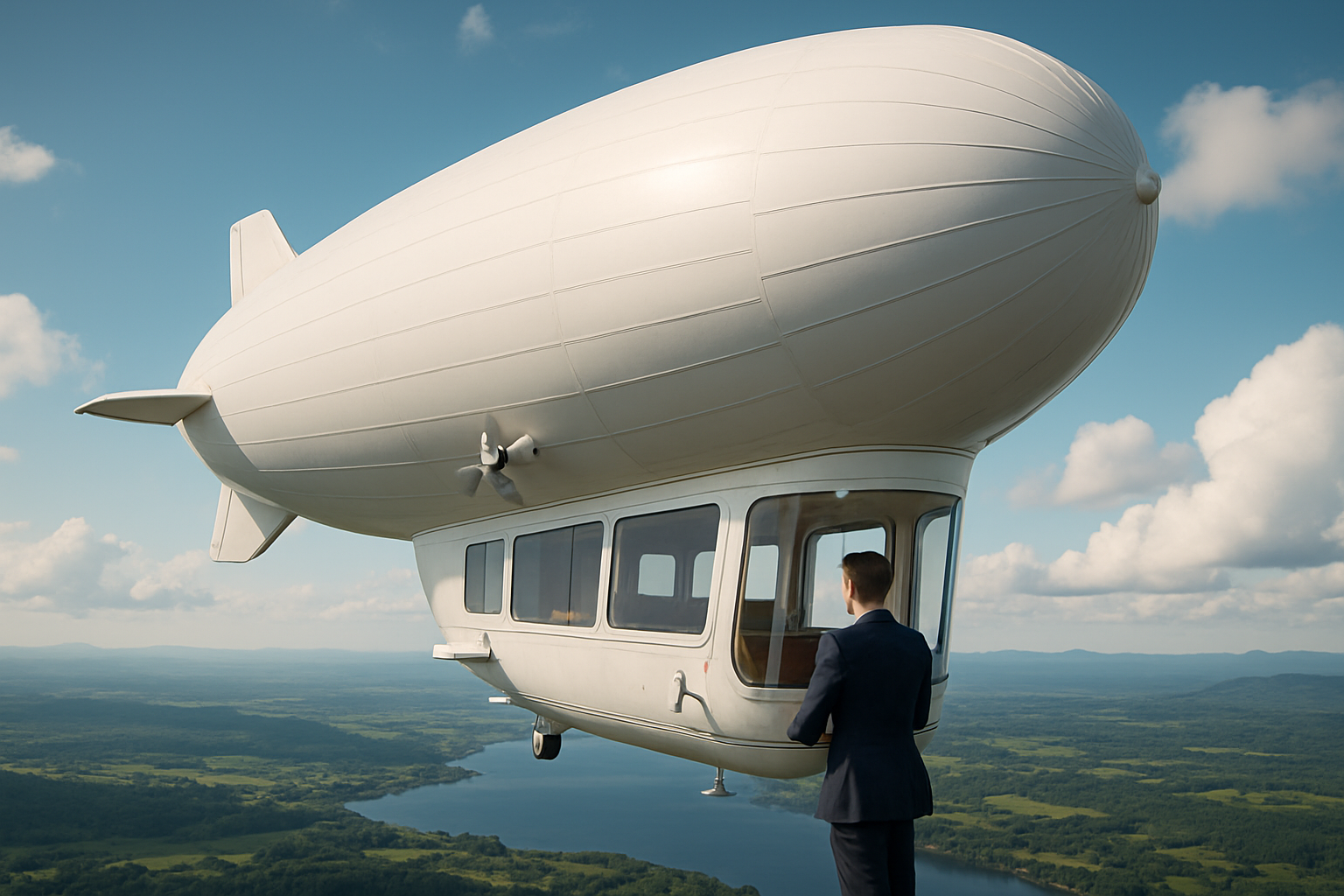Airship Tourism: Rediscovering the Romance of Luxury Sky Travel
The gentle hum of engines, panoramic views of landscapes unfurling below, and the unhurried pace of travel harken back to a bygone era. Yet, this isn't a scene from the past – it's the emerging trend of airship tourism. As travelers seek unique experiences that blend nostalgia with modern comfort, the resurrection of luxury airship travel is capturing imaginations worldwide. This renaissance in aerial exploration offers a fresh perspective on slow travel, sustainability, and the art of savoring the journey itself.

Today’s airships utilize helium instead of the flammable hydrogen of the past, addressing the primary safety concern that led to their decline. Modern airship designs incorporate lightweight carbon fiber frames, solar panels for supplementary power, and state-of-the-art navigation systems. These innovations have not only made airships safer but also more sustainable and efficient than ever before.
A New Era of Sustainable Luxury
Airship tourism is positioning itself as a sustainable alternative to traditional air travel. With significantly lower carbon emissions compared to jets, airships offer eco-conscious travelers a way to explore the world with a reduced environmental impact. The slow pace of airship travel – typically cruising at speeds of 80 to 100 miles per hour – allows for a more immersive experience of the landscapes below.
Luxury airship operators are capitalizing on this slower pace, offering multi-day journeys that focus on the experience of travel itself rather than just reaching a destination. Onboard amenities rival those of luxury cruise ships, with gourmet dining, spacious lounges, and even glass-bottomed observation decks for unparalleled views.
Redefining the In-Flight Experience
The airship experience is a far cry from the cramped confines of commercial air travel. Passengers aboard these sky cruisers enjoy spacious cabins, large windows, and the ability to move freely about the vessel. The gentle, almost imperceptible motion of the airship creates a serene environment, allowing travelers to relax and enjoy the journey without the fatigue often associated with long-distance travel.
Itineraries are designed to take advantage of the airship’s unique capabilities, including the ability to hover over points of interest or make unscheduled stops at hard-to-reach locations. This flexibility opens up new possibilities for exploration, from floating over remote natural wonders to accessing historical sites typically off-limits to large tour groups.
The Challenges of Airship Infrastructure
While the concept of airship tourism is captivating, the industry faces significant challenges in terms of infrastructure development. Unlike traditional aircraft, airships require specialized docking and maintenance facilities. The construction of these facilities, often referred to as airship ports or aerodromes, is a considerable investment that requires careful planning and substantial financial backing.
Additionally, airships are more susceptible to weather conditions than jets, which can impact scheduling and route planning. Operators must develop robust systems for monitoring and predicting weather patterns to ensure passenger safety and comfort. Despite these challenges, several companies are making significant strides in establishing the necessary infrastructure and operational protocols to make airship tourism a viable and reliable option for luxury travelers.
The Future of Aerial Tourism
As the airship tourism industry gains momentum, it’s poised to revolutionize not just luxury travel but also cargo transport and scientific research. The ability to access remote areas with minimal environmental impact makes airships an attractive option for eco-tourism operators and conservationists alike. Some visionaries even see airships as potential mobile hotels or research stations, capable of extended stays in areas of interest without the need for ground-based accommodations.
The development of electric and hybrid propulsion systems for airships is another area of innovation that could further enhance their eco-friendly credentials. These advancements could potentially lead to zero-emission airship travel, setting a new standard for sustainable tourism.
Sky-High Insights: Airship Travel Facts
• Modern airships can stay aloft for weeks at a time, making them ideal for long-duration journeys
• The largest airships being developed today can accommodate up to 100 passengers in luxury suites
• Airships operate at altitudes of 1,000 to 7,000 feet, providing unparalleled views of landscapes below
• Some airship designs incorporate helium recycling systems, reducing the need for frequent refills
• Airship travel produces up to 80% fewer carbon emissions compared to traditional jet aircraft
As we look to the skies, the gentle giants of airship tourism offer a glimpse into a future where the journey is just as important as the destination. This revival of a classic mode of travel, enhanced by modern technology and a focus on sustainability, presents a unique opportunity for adventurers and luxury seekers alike. The airship’s return to the forefront of tourism not only rekindles the romance of early aviation but also charts a course for more mindful and immersive travel experiences in the years to come.





